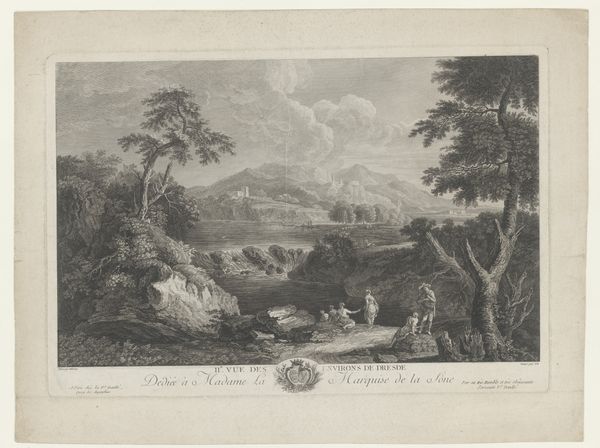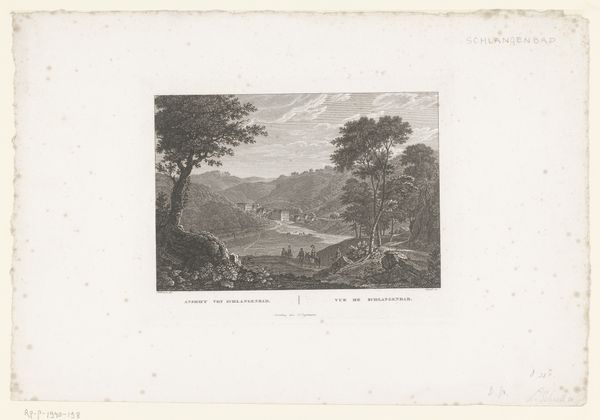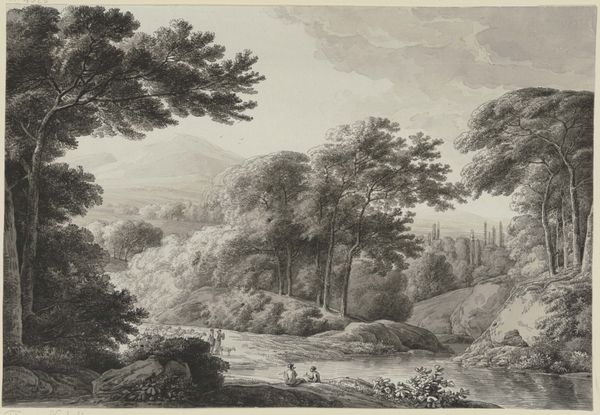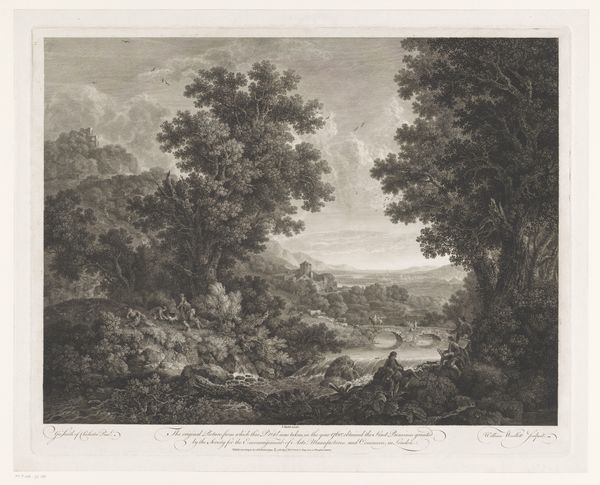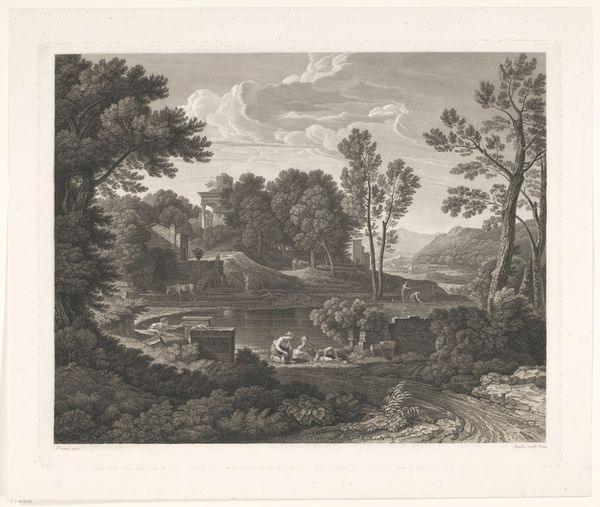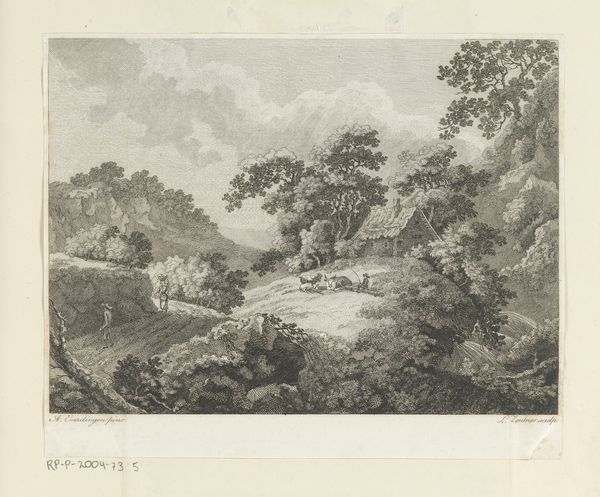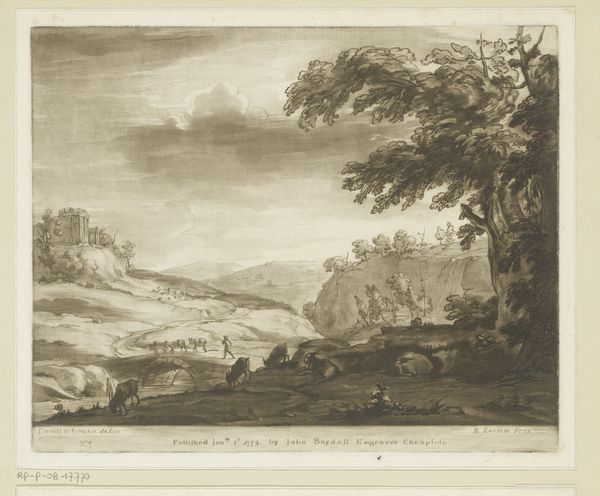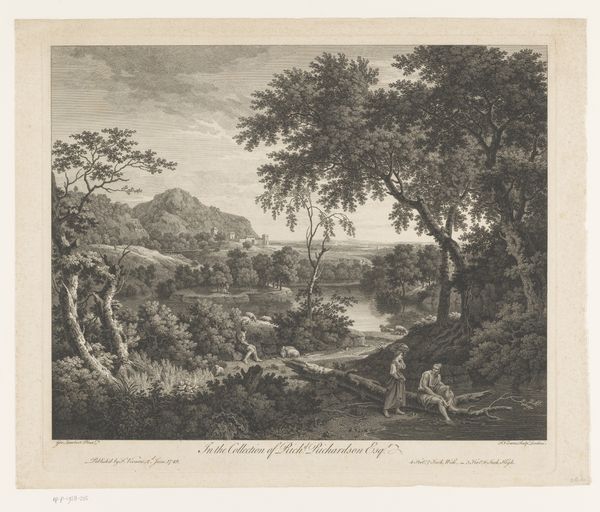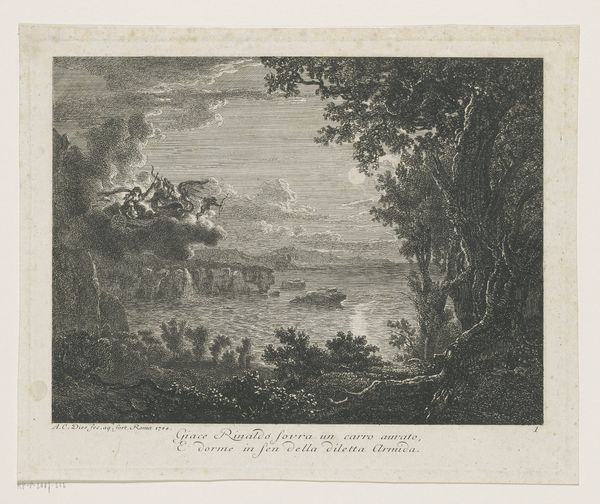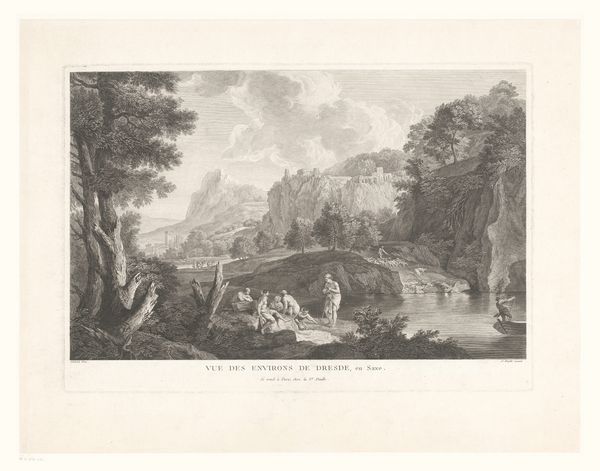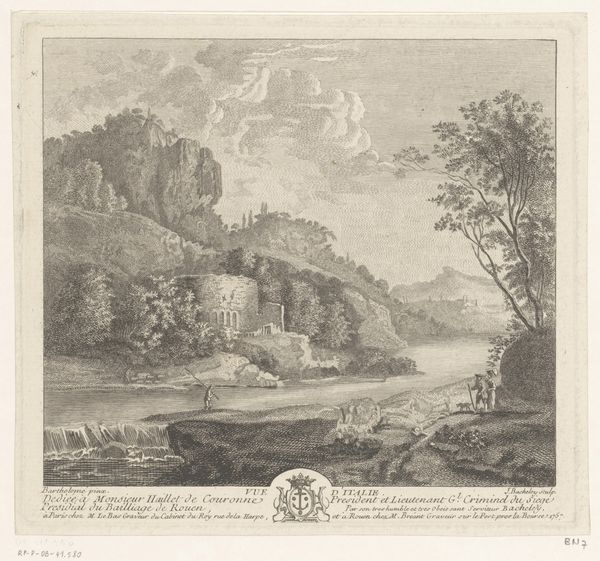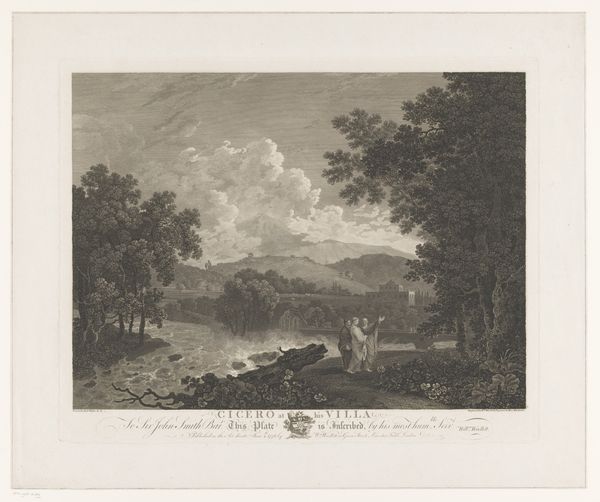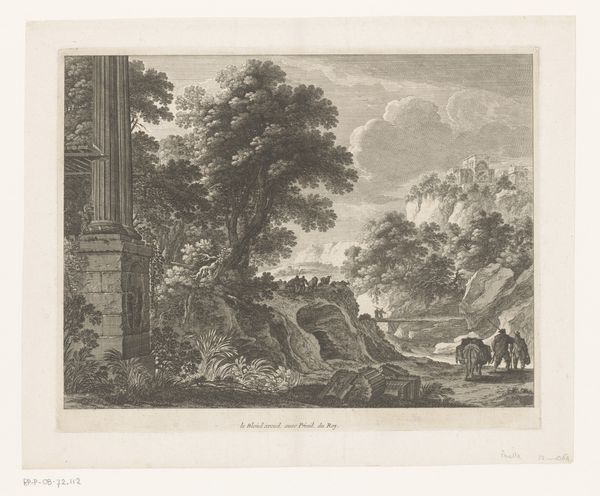
print, etching, engraving
#
neoclassicism
# print
#
etching
#
landscape
#
waterfall
#
form
#
15_18th-century
#
line
#
engraving
#
realism
Dimensions: height 422 mm, width 512 mm
Copyright: Rijks Museum: Open Domain
Curator: Let's take a moment to observe this etching and engraving titled "Landschap met vissers bij een waterval," or "Landscape with Fishermen at a Waterfall," created by William Byrne in 1769. What are your initial thoughts? Editor: It evokes a sense of serene observation. The limited tonal range creates a slightly detached feeling, a world observed from afar rather than inhabited. There's also something interesting about the presence of labor here. Curator: I agree. Considering Byrne's artistic context, it’s important to remember how landscape prints gained popularity in the 18th century as signifiers of wealth and cultivated taste. Think about how prints could disseminate visions of ideal nature to a growing middle class. How might this resonate today? Editor: That’s fascinating. It reframes our understanding, doesn’t it? The scene, with its tiny fishermen, is seemingly picturesque, but embedded in this aestheticization of labor and land is, perhaps, an implicit commentary on ownership and social structure. Is Byrne romanticizing or subtly critiquing the relationship? Curator: Precisely. It invites us to question whose vision of nature is being presented and what ideologies underpin it. What narratives are normalized through its depiction? Note the neoclassicism that permeates Byrne's landscapes. How would you link the neoclassic ideas of Byrne and his social environments? Editor: Right, this print highlights that intersection between form, nature and societal ideas, but there’s a detachment, a formality, almost. In viewing this work, it reveals the powerful shaping forces of museums and the socio-political context inherent within the art world. The reception itself. Curator: I am with you. The delicate lines of the etching certainly emphasize form, creating a beautiful interplay between light and shadow. Byrne certainly wasn't indifferent to contemporary ideas around nature and power. Editor: Thank you for pointing me toward this layered understanding. I feel my initial, simple interpretation of its surface appeal has been vastly expanded, unveiling greater complexities.
Comments
No comments
Be the first to comment and join the conversation on the ultimate creative platform.

